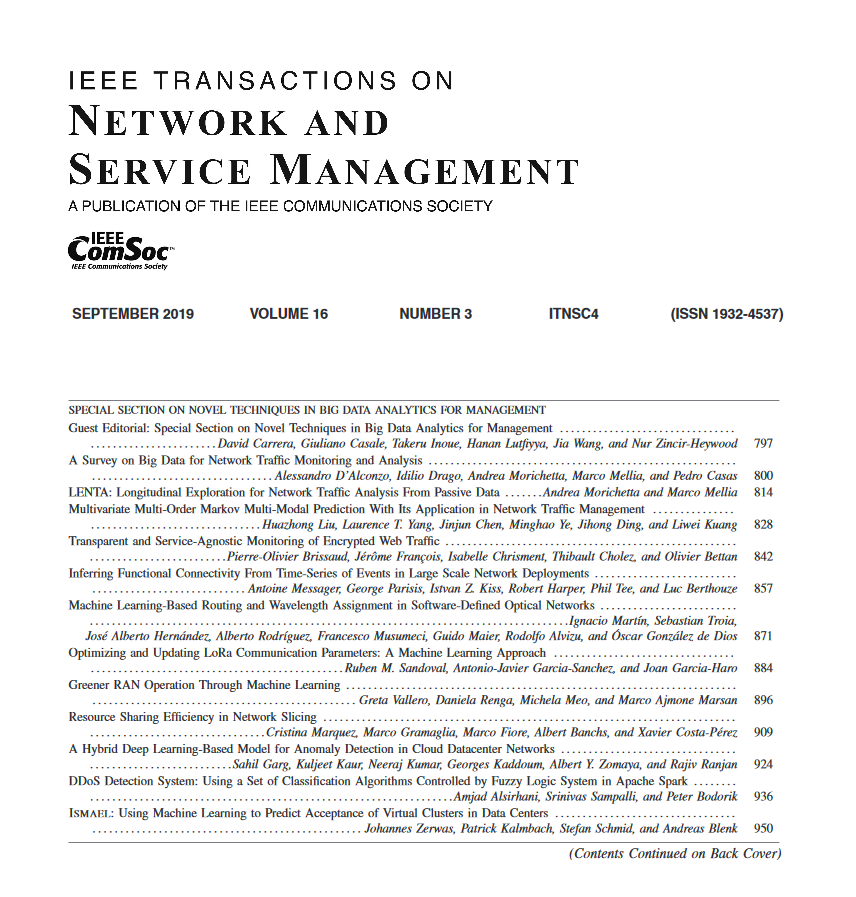A Stackelberg Game-Based Trajectory Planning Strategy for Multi-AAVs-Assisted MEC System
IF 5.4
2区 计算机科学
Q1 COMPUTER SCIENCE, INFORMATION SYSTEMS
IEEE Transactions on Network and Service Management
Pub Date : 2025-02-07
DOI:10.1109/TNSM.2025.3539671
引用次数: 0
Abstract
Nowadays, Mobile Edge Computing (MEC) has been widely deployed to enhance the computational capabilities of mobile devices. However, the geographic location of MEC servers is usually fixed. In order to provide flexible edge computing services, some works have considered integrating Autonomous aerial vehicles (AAVs) into MEC networks. In the context of AAV-assisted edge computing, there usually exist multiple AAVs and users, and each AAV may aim to maximize its profit by providing computing services, while users will decide which AAVs to utilize based on their preferences. In this context, how AAVs and users effectively plan their trajectories becomes particularly important as it will affect the profitability of AAVs and the user experience. Since the trajectories of AAVs and users are affected by each other, we model the trajectories of AAVs and users as a Stackelberg game, and then design trajectory planning strategies for users and AAVs based on Independent Proximal Policy Optimization (IPPO) and Proximal Policy Optimization (PPO) respectively, aiming to maximize AAVs’ profits while ensuring user acceptance of AAV services. Finally, we evaluate the proposed trajectory planning strategy against three typical benchmark strategies using synthetic and realistic datasets. The experimental results demonstrate that our strategy can outperform benchmark strategies in terms of AAV profit while guaranteeing users’ service experience.基于Stackelberg博弈的多aav辅助MEC系统轨迹规划策略
目前,移动边缘计算(MEC)已被广泛应用于提高移动设备的计算能力。然而,MEC服务器的地理位置通常是固定的。为了提供灵活的边缘计算服务,一些工作已经考虑将自主飞行器(aav)集成到MEC网络中。在AAV辅助边缘计算的背景下,通常存在多个AAV和用户,每个AAV可能会通过提供计算服务来最大化其利润,而用户会根据自己的喜好决定使用哪些AAV。在这种情况下,自动驾驶汽车和用户如何有效地规划他们的轨迹变得尤为重要,因为这将影响自动驾驶汽车的盈利能力和用户体验。由于自动驾驶汽车和用户的轨迹是相互影响的,我们将自动驾驶汽车和用户的轨迹建模为Stackelberg博弈,然后分别基于独立近端策略优化(IPPO)和近端策略优化(PPO)设计用户和自动驾驶汽车的轨迹规划策略,以最大化自动驾驶汽车的利润,同时保证用户接受自动驾驶汽车的服务。最后,我们使用合成的和真实的数据集,对比三种典型的基准策略来评估所提出的轨迹规划策略。实验结果表明,在保证用户服务体验的同时,我们的策略在AAV利润方面优于基准策略。
本文章由计算机程序翻译,如有差异,请以英文原文为准。
求助全文
约1分钟内获得全文
求助全文
来源期刊

IEEE Transactions on Network and Service Management
Computer Science-Computer Networks and Communications
CiteScore
9.30
自引率
15.10%
发文量
325
期刊介绍:
IEEE Transactions on Network and Service Management will publish (online only) peerreviewed archival quality papers that advance the state-of-the-art and practical applications of network and service management. Theoretical research contributions (presenting new concepts and techniques) and applied contributions (reporting on experiences and experiments with actual systems) will be encouraged. These transactions will focus on the key technical issues related to: Management Models, Architectures and Frameworks; Service Provisioning, Reliability and Quality Assurance; Management Functions; Enabling Technologies; Information and Communication Models; Policies; Applications and Case Studies; Emerging Technologies and Standards.
 求助内容:
求助内容: 应助结果提醒方式:
应助结果提醒方式:


